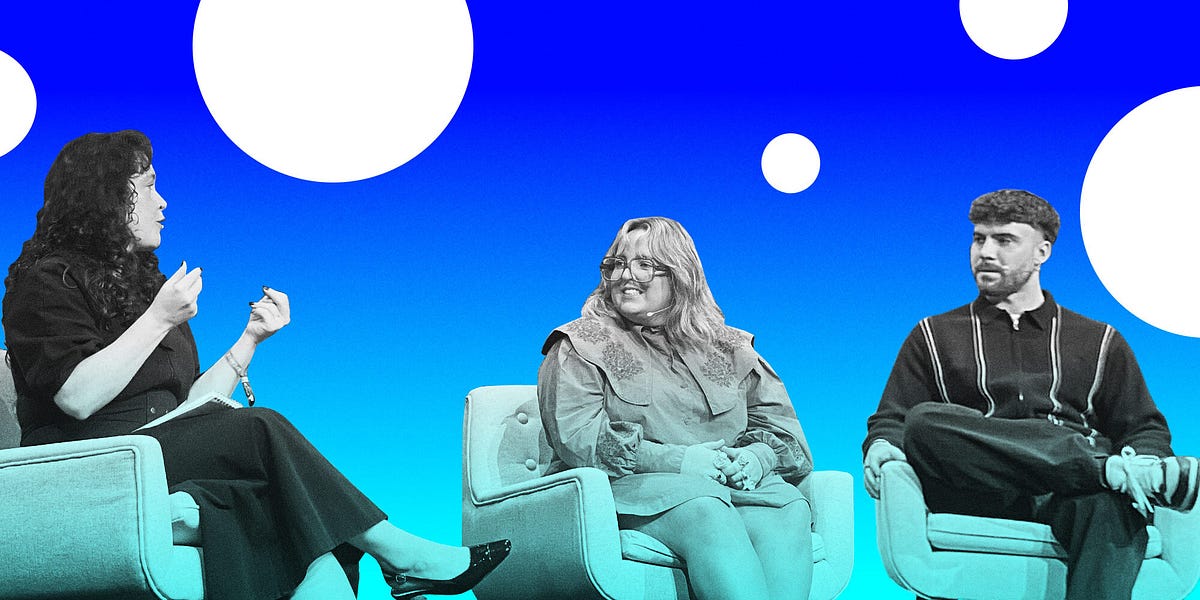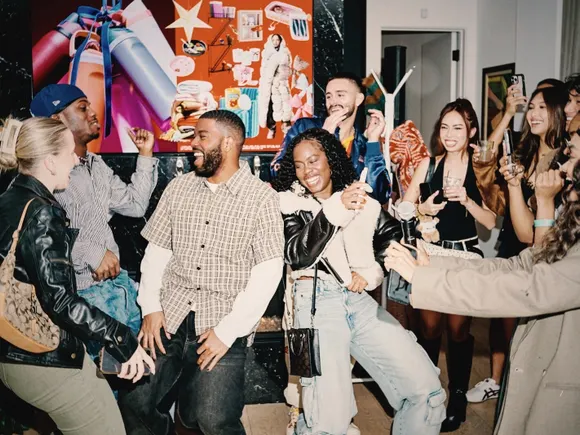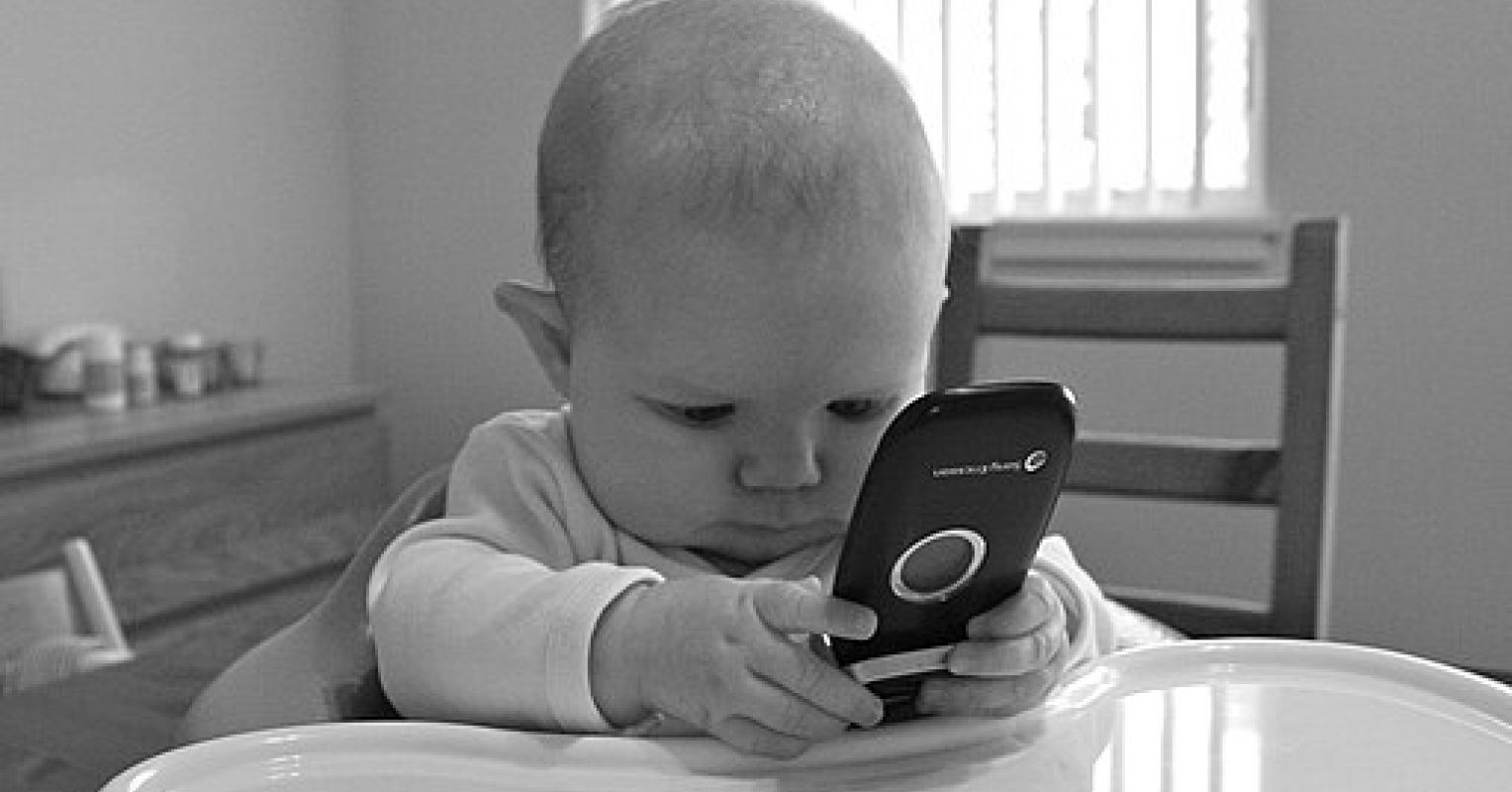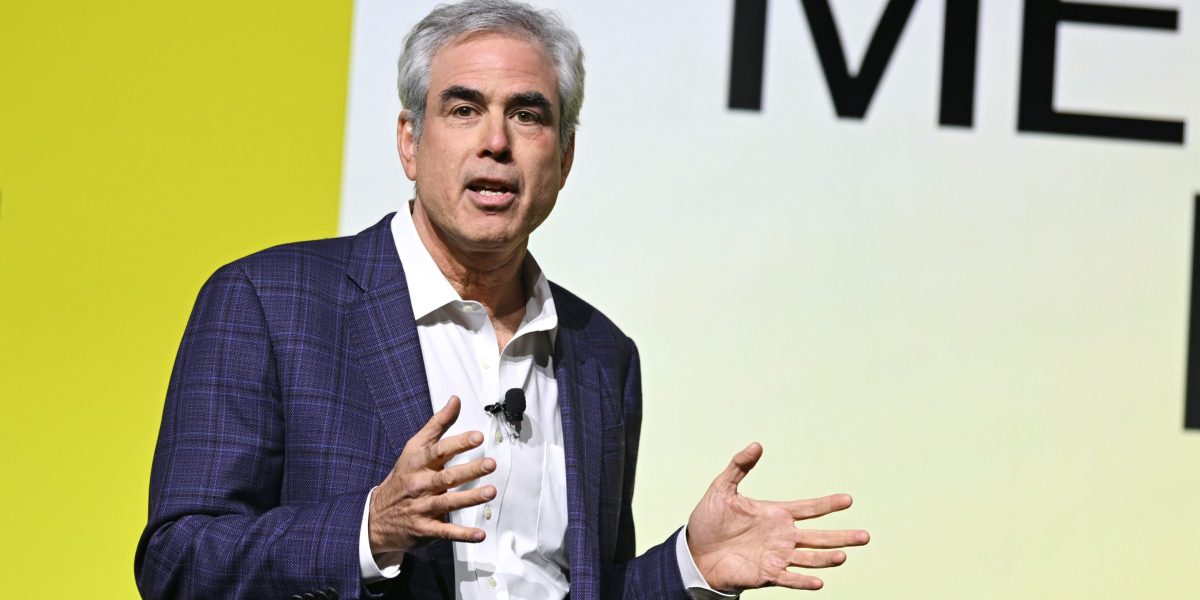#gen-z
#gen-z
[ follow ]
#social-media #housing-affordability #tiktok #authenticity #nostalgia #influencer-marketing #marketing
Social media marketing
fromAdExchanger
7 hours agoWhy Acne Treatment Brand Differin Developed Pimple-Popping, Hormone-Dodging Roblox Games | AdExchanger
Differin engaged Gen Z gamers through authentic streamer partnerships and in-game experiences, driving substantial awareness, purchase intent, and earned-media growth.
Fashion & style
fromIndependent
3 days agoMaire Treasa Ni Cheallaigh: Charli XCX and Sabrina Carpenter ought to realise promoting trends like smoking comes with a body count
Smoking imagery is resurging across music, fashion and film, increasing visibility and potential appeal of smoking among Gen Z audiences.
fromBusiness Insider
1 week agoRestaurateur David Chang says one of Gen Z's habits is an 'existential threat' to the restaurant world
Momofuku founder David Chang says America's youth isn't drinking alcohol in the same way as earlier generations, and it has become the "real existential threat" to the restaurant industry. "Kids just don't drink anymore," Chang said in an interview with TBPN talk-show hosts John Coogan and Jordi Hays this week. "They are never going to know what it is like to wake up at 3 p.m. in the afternoon and be like: 'Shit, I left my credit card in that bar.'"
Food & drink
fromBusiness Insider
1 week agoGap CEO says its viral denim campaign wasn't just a hit online - it drove double-digit growth in sales, fueled by Gen Z
Richard Dickson, CEO of Gap Inc., said the brand's "Better in Denim" ad campaign, in addition to being a huge hit on social media, converted into significant sales. "With more than 8 billion impressions and 500 million views, Better in Denim culminated in a global cultural takeover and has become one of the brand's most successful campaigns to date, generating significant traffic and double-digit growth in denim,"
Marketing
Marketing
fromExchangewire
1 week agoNIVEA Expands Further Into the Student Marketplace With Dig In's Bespoke Sampling Opportunities - ExchangeWire.com
NIVEA expanded student sampling with 135,000 deodorant distributions across 180+ universities, driving awareness, trial, and reinforced brand trust among Gen Z students.
US news
fromFortune
1 week ago'The kids aren't alright,' warns top economist, as unemployed, pessimistic Gen Z living with parents blow a $12 billion hole in consumption | Fortune
Gen Z faces weak hiring, unaffordable housing, and low wage growth, causing long-term labor-market scarring and $12 billion annual consumer activity loss.
Relationships
fromFortune
1 week agoHedge fund billionaire Bill Ackman just dropped a 4-word dating tip - and the internet is going crazy over it | Fortune
Bill Ackman's four-word pickup line 'May I meet you?' sparked a viral frenzy and reignited debate about spontaneous, in-person dating versus app-driven interactions.
Digital life
fromFortune
2 weeks agoThis 24-year-old ditched the U.S. to work in Chile-now, she has better work-life balance and saves more than $1,200 a month | Fortune
Young Americans can work remotely for U.S. companies while living abroad to lower costs and travel, exemplified by a Gen Zer living in Santiago.
fromFortune
2 weeks agoCurious Gen Zers want to know what their peers are earning-so they're sharing their salaries at work and won't apply to jobs that don't list wages | Fortune
Gen X'ers may be a bit uncomfortable if you openly blurt out how much you're making at the office-but it's less of a taboo for Gen Z, according to a new survey from Kickresume. The poll, which measured 1,850 anonymous employees worldwide, found only 31% of people say salary is openly discussed at their job-while 37% have rules against discussing pay.
Careers
Artificial intelligence
fromFast Company
3 weeks ago3D digital avatars are redefining human interaction. Here's what it means for brands
3D digital avatars let brands create real-time, emotionally responsive, lifelike interactions that deepen fan engagement and scale personalized experiences across virtual spaces.
fromPsychology Today
3 weeks agoLeading Generation Z? Don't Think "What," Think "Why"
I bet you remember when Nike first began using their catchphrase: "Just Do It!" It was 1988, and this tagline could be found everywhere. It was a challenge to act, to initiate, to take a risk, to move forward even if it's hard. After 37 years, Nike is reintroducing this iconic rallying cry to Generation Z, but they are tailoring their message to the Gen Z mindset: "Why Do It?" It is customized to meet young athletes where they are.
Marketing
fromwww.theguardian.com
3 weeks agoLOL: is this the ultimate texting faux pas (and what should you use instead)?
So as in laugh out loud? Or laughing out loud, though David Cameron thought it stood for lots of love and used to sign off to Rebekah Brooks, the former Sun and News of the World editor, with a LOL. I'm LOL-ing at his LOL mishap. Well, you shouldn't. Why? Because anyone who still LOLs is not cool. Laughing out loud is no longer acceptable? No, using LOL in a text or a WhatsApp is no longer acceptable. Says who? It's according to gen Z.
Digital life
fromPR Daily
3 weeks agoReaching Gen Z in the age of AI: Three takeaways for PR professionals from the Digital 2026 report - PR Daily
Gen Z may not be the AI-native generation, but it's certainly the AI-pioneering one. From studying to shopping, LLMs and other AI-powered tools have transformed how young people navigate the digital (and real) world, and the changes keep emerging. As the Digital 2026: Global Overview Report shows, Gen Z navigates the digital world like no other generation that came before it. Here are three big takeaways from this industry-leading report that every PR professional needs to have a competitive advantage in the AI age.
Online marketing
fromAol
3 weeks agoCoco Gauff Joins Taylor Fritz in Calling Out Tennis for Disconnecting With Younger Audience
In today's digital age, where every sport spins stories across screens, tennis still seems trapped in its old rhythm, struggling to embrace the pulse of modern content. Taylor Fritz and his girlfriend, Morgan Riddle. who began dating the American star in 2020 and turned her life as a tennis 'WAG' into a social media empire, recently sparked conversation by calling out the sport's rigid approach to online storytelling.
Social media marketing
Business
fromBusiness Insider
1 month agoI'm a millennial who survived the Great Recession. Here's my lesson to Gen Z about the tough job market.
Young generations face career-launch crises—2008 for millennials and the pandemic plus inflation for Gen Z—creating persistent job-market disruption and financial insecurity.
fromHuffPost
4 weeks agoThe 1 Gen-Z Phone Habit Everyone Should Steal
As a preteen, I couldn't resist the siren song of AIM, or AOL Instant Messenger. I'd hear that "door opening" noise or a message notification and rush to my computer, eager to see if the sign-on was my best friend or my boyfriend, both who were equally tethered to AIM at the time. (Naturally, all of our screen names usually contained the name of the person we were "dating" at the time ― NicksGirl4Eva88 was the height of romance in middle school in 2001.)
Digital life
Careers
fromFortune
4 weeks agoThe Gen Z job crisis is real: 1.2 million recent grads in the U.K. competed for just 17,000 open roles | Fortune
Gen Z faces intense competition for entry-level jobs as record-high application volumes, AI-displaced roles, and deceptive employer practices shrink opportunities.
fromFortune
4 weeks agoGen Zers are using AI to skip meetings, get promoted faster and win bigger salary hikes. But they don't feel great about it | Fortune
Gen Z is quietly rewriting the rules at work by letting AI take their meetings. An October study from Software Finder, a software discovery platform and database, found that three in ten survey respondents admitted to skipping a meeting, banking on AI to "have their back" by taking notes. The survey also found that 19% of full-time worker respondents use AI tools to automatically generate meeting notes. The strategy is paying off for some: According to the research, employees that use AI regularly to take meeting notes were 28% more likely to be promoted, compared to 15% otherwise, and earned nearly $20,000 more annually.
Artificial intelligence
Remote teams
fromFortune
4 weeks agoGen Z workers say they don't want to return to the office because it means they can't binge-watch their favorite TV shows during work anymore | Fortune
A large majority of Gen Z stream shows while working from home, often hiding it, and many postpone work to finish binge-watching.
fromFortune
4 weeks agoMore than half of Gen Z says they only use cash as 'a last resort' and doing so is 'cringe,' survey shows | Fortune
This year, cash ranked as the third-most-used payment method, behind credit and debit cards, according to the Federal Reserve Financial Service's 2025 Diary of Consumer Payment Choice. And Gen Zers are leading the charge in ditching paper for plastic. Results from a Cash App/Harris Poll survey released Thursday shows more than half of Gen Z only uses cash as a "last resort" when paying, and almost a third said people who pay with cash are either "out of touch" or "cringe."
E-Commerce
Miscellaneous
fromBusiness Insider
1 month ago'Think big': A 35-year finance veteran urges Gen Z to start their own businesses as entry-level jobs dry up
AI-driven hiring and shrinking graduate schemes have eroded entry-level finance opportunities, pushing Gen Z toward entrepreneurship as a practical career hedge.
Television
fromPinkNews | Latest lesbian, gay, bi and trans news | LGBTQ+ news
1 month agoThese two spooky, retro TV series are Gen Z's favourite according to new report
Gen Z prefers relatable, friendship-focused entertainment; Stranger Things and Wednesday top their viewing, with high interest in animation and varied identity-based preferences.
fromEmployee Benefit News
1 month ago2 strategies that help Gen Z understand their benefits better
Gen Z may be the most tech-savvy generation in the workforce, but when it comes to understanding their benefits, many are still lost in translation. Thirty-percent of Gen Z employees don't enroll in employee-paid benefits because they don't understand them, according to research from financial investment management and insurance company Principal Financial Group. Another 50% admit they use social media like TikTok and Instagram to learn about benefits - bypassing their HR and benefit leaders entirely.
Business
fromBusiness Insider
1 month agoThe facelift boom has a dark side. A surgeon shared 5 red flags to watch out for.
"Nowadays, everyone gets so caught up in technique - 'oh, you had a deep plane, you had a SMAS,'" he said. "'But the main factor is actually the surgeon.' He said he's seen huge disparities in facelift results, for example, even if the procedure itself is the same."
Medicine
fromwww.housingwire.com
1 month agoGen Z homeowners more dissatisfied with insurance companies
While high premiums were the top complaint across all age groups, Gen Z respondents were more likely to point to poor customer service (15%) and claims handling (28%) as reasons for dissatisfaction. Some insurance companies outsource all of their customer service, which can lead to really poor alignment on communication between the insurance company, the customer service reps and the policyholders, said Sean Harper, CEO of Kin.
Real estate
Higher education
fromstupidDOPE | Est. 2008
1 month agoNAPA Launches Free TradeWear Collection with Dickies and Legendary Game Artist Stephen Bliss | stupidDOPE | Est. 2008
Gen Z increasingly chooses vocational training and skilled trades, meeting rising demand for high-tech vehicle technicians amid a projected 800,000-technician shortage by 2027.
Fashion & style
fromFortune
1 month agoCoach CEO Todd Kahn: 'We can win with a Chinese consumer because of American design' | Fortune
Coach is rapidly growing as Gen Z-driven social media demand boosts revenue and shares while CEO Todd Kahn focuses on consistent, affordable products amid tariff uncertainty.
Business
fromFortune
1 month agoMercedes F1 team CEO Toto Wolff's experience with two Gen Z drivers made him realize the workplace stereotypes are 'a bit unfair' | Fortune
Gen Z workers are diverse in personalities, skills, and workplace needs, so broad stereotypes about the generation are inaccurate and unhelpful.
[ Load more ]
















